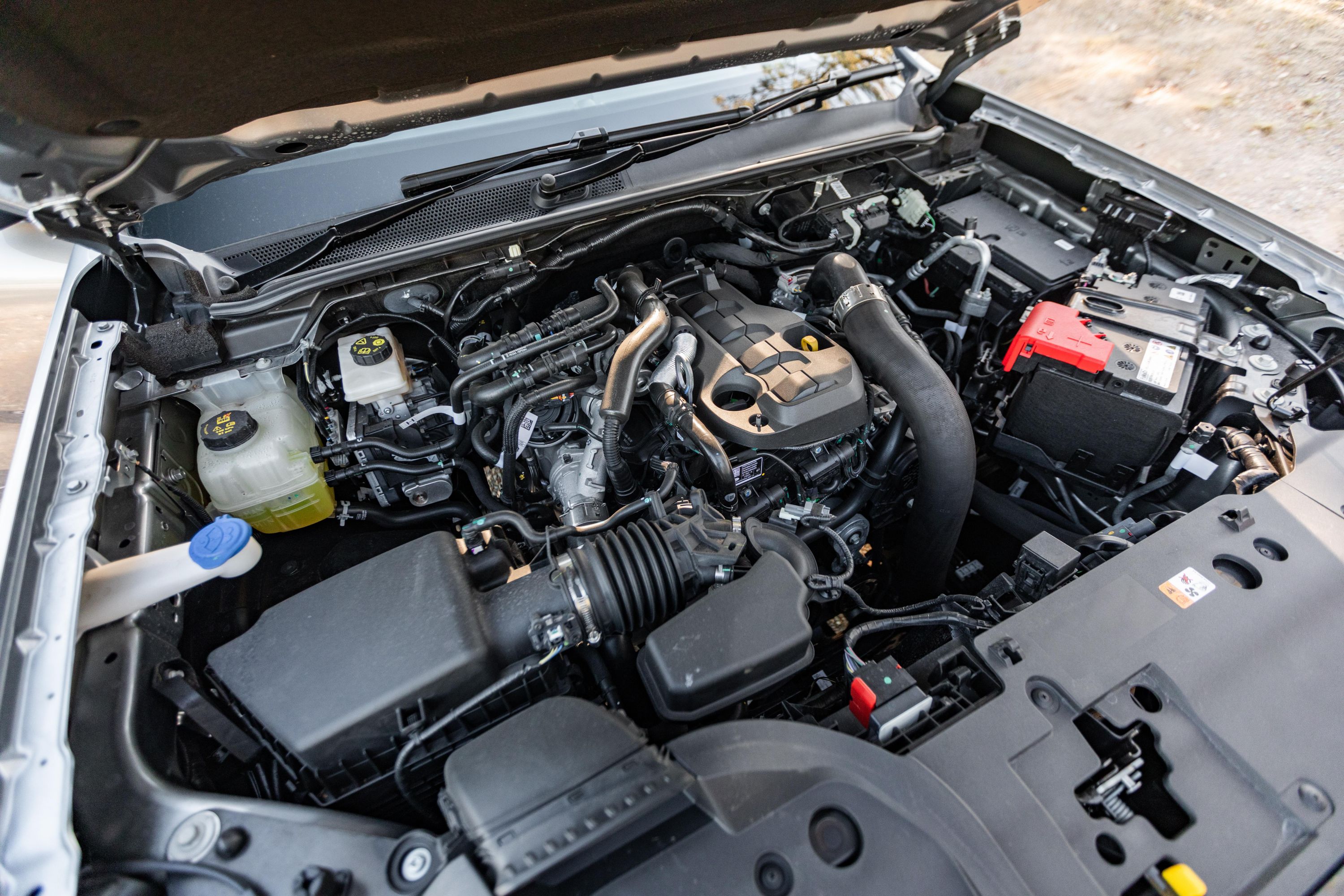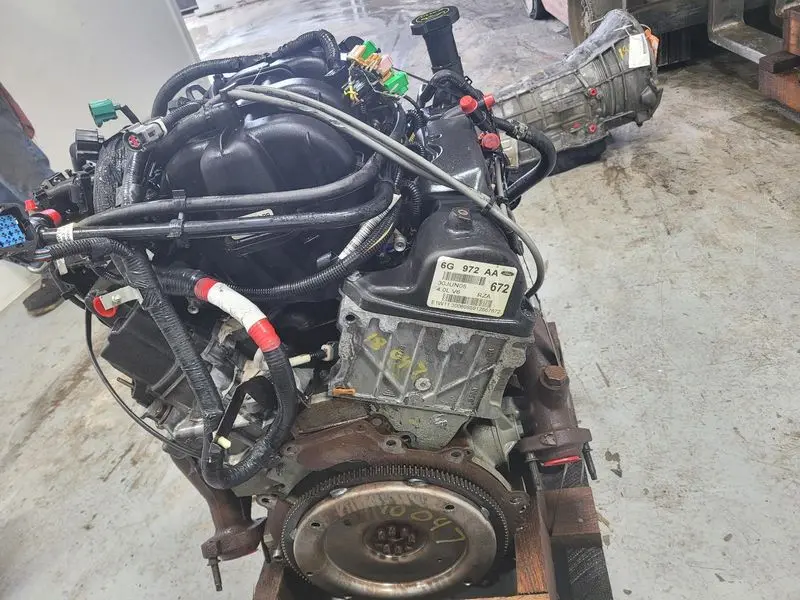How the 2.2 Ford Ranger Engine Delivers Power and Efficiency for Your Truck
How the 2.2 Ford Ranger Engine Delivers Power and Efficiency for Your Truck
Blog Article
Comprehending the Essentials of Vehicle Engines: Functions, types, and features

Overview of Car Engines
A cars and truck engine acts as the heart of a lorry, converting gas into mechanical energy to thrust it onward. This detailed system consists of various parts that work in unison to make sure optimal efficiency and efficiency. The fundamental operation of an automobile engine involves the inner combustion process, in which gas and air are mixed, fired up, and expelled to create power.
The engine's layout can significantly affect its efficiency, fuel effectiveness, and exhausts. Trick components include the cyndrical tube block, pistons, crankshaft, and camshaft, each playing an important duty in the engine's overall function. The cyndrical tube block houses the cyndrical tubes where combustion takes place, while the pistons convert the eruptive energy from burning right into linear movement. This activity is after that transformed right into rotational energy by the crankshaft, making it possible for the vehicle's wheels to turn.
In addition to these parts, engines typically utilize different systems such as fuel injection, ignition, and cooling systems to improve performance and durability. Recognizing the basic auto mechanics of car engines is important for identifying problems and doing upkeep, ultimately adding to the car's dependability and effectiveness in time.

Kinds Of Cars And Truck Engines
Vehicle engines can be categorized right into a number of kinds based upon their layout, fuel kind, and functional principles. 2.2 ford ranger engine. One of the most usual categories include inner combustion engines (ICE), electric engines, and crossbreed engines
Inner burning engines, which can be additional divided right into gas and diesel engines, operate by sparking a fuel-air combination to generate power. Gas engines are commonly lighter and smoother, while diesel engines are more fuel-efficient and deal higher torque.
Electric engines use electric energy saved in batteries to power an electrical motor, offering instant torque and absolutely no discharges during operation. As innovation developments, electric cars (EVs) are significantly ending up being popular for their ecological benefits and lower running prices.
Hybrid engines incorporate aspects of both inner combustion and electrical engines, allowing for adaptable source of power and improved gas efficiency. They can run in various modes, utilizing either the gas engine, the electric motor, or both simultaneously.
Each kind of engine has distinctive advantages and negative aspects, influencing their application in various car kinds and market sectors, from compact cars to durable vehicles. Understanding these kinds is vital for making educated decisions relating to lorry option and efficiency expectations.
Engine Features Explained
Comprehending engine functions is important for realizing how cars operate efficiently. At the core of any kind of internal burning engine exists the essential procedure of converting fuel into mechanical energy.
The ignition occurs next, igniting the blend and developing a fast growth of gases. This force drives the piston down throughout the power stroke, which ultimately translates right into the rotational activity of the crankshaft. The exhaust stroke after that this website gets rid of the invested gases from the chamber, making means for a new cycle to begin.
In enhancement to these primary features, engines additionally integrate systems that handle cooling and lubrication, ensuring optimal functional temperature levels and lowering rubbing in between moving parts. This intricate interaction of features allows the engine to produce the power essential for automobile propulsion while preserving performance and dependability. Recognizing these functions offers valuable understanding right into the complexities of automotive design and enhances the ability to detect and attend to engine-related issues successfully.
Key Engine Features
Engine layout includes several vital functions that substantially affect toughness, efficiency, and efficiency. Among the most vital facets is the engine arrangement, which consists of inline, V-type, and level styles. Each setup affects the engine's balance, power, and size result, consequently influencing overall lorry dynamics.
One more essential feature is the engine variation, referring to the complete quantity of all cyndrical tubes. Larger displacements commonly yield even more power yet may endanger fuel efficiency. Engine products also play a critical duty; high-strength and lightweight materials, such as aluminum and magnesium alloys, improve efficiency without including too much weight.
The sort of fuel shot system used-- such as multi-port or direct shot-- influences combustion performance and discharges. Turbocharging and supercharging are functions that enhance engine performance by forcing additional air into the combustion chamber, boosting power result without significantly enhancing engine size.
Lastly, the presence of advanced engine administration systems enhances reference fuel-air blend and ignition timing, adding to smoother operation and much better fuel economy. Collectively, these attributes specify an engine's capacities, establishing the structure for its performance and longevity in a competitive automotive landscape.
Maintenance Tips for Engines
Correct engine upkeep is vital for guaranteeing ideal performance and longevity, as disregarding regular treatment can bring about considerable problems down the line. To maintain your engine properly, start with regular oil adjustments, commonly every 3,000 to 7,500 miles, depending on the sort of oil utilized. Fresh oil lubricates engine components, lowering friction and wear.
Additionally, monitoring coolant degrees is important to stop getting too hot. Make sure that the coolant is topped up and remains in good problem to maintain reliable temperature guideline. On a regular basis change and inspect air and gas filters, as clogged filters can impede airflow and fuel distribution, compromising look at these guys engine performance.
Additionally, take notice of ignition system and ignition systems. Defective or worn ignition system can lead to misfiring and minimized performance. Checking the battery terminals and links for deterioration is likewise important, as a weak battery can impact engine beginning.

Conclusion
In summary, a thorough understanding of car engines encompasses various types, functions, and essential functions that dramatically affect lorry efficiency. Inner burning engines, in addition to electrical and hybrid options, show varied devices for power conversion. 2.2 ford ranger engine. Identifying the crucial features, such as consumption and exhaust cycles, alongside crucial engine features like setup and gas shot systems, furnishes cars and truck proprietors with the understanding required for efficient maintenance and operation, ultimately improving car durability and effectiveness
An auto engine offers as the heart of a car, converting gas into mechanical energy to move it forward. The basic procedure of an automobile engine involves the inner burning process, wherein gas and air are blended, fired up, and removed to create power.
Frequently examine and change air and gas filters, as clogged up filters can hinder air movement and fuel shipment, compromising engine effectiveness. - 2.2 ford ranger engine
In summary, an extensive understanding of auto engines encompasses various kinds, functions, and key attributes that considerably affect car performance. Identifying the important functions, such as intake and exhaust cycles, along with vital engine attributes like setup and gas injection systems, equips automobile proprietors with the knowledge needed for effective maintenance and procedure, inevitably enhancing automobile long life and effectiveness.
Report this page